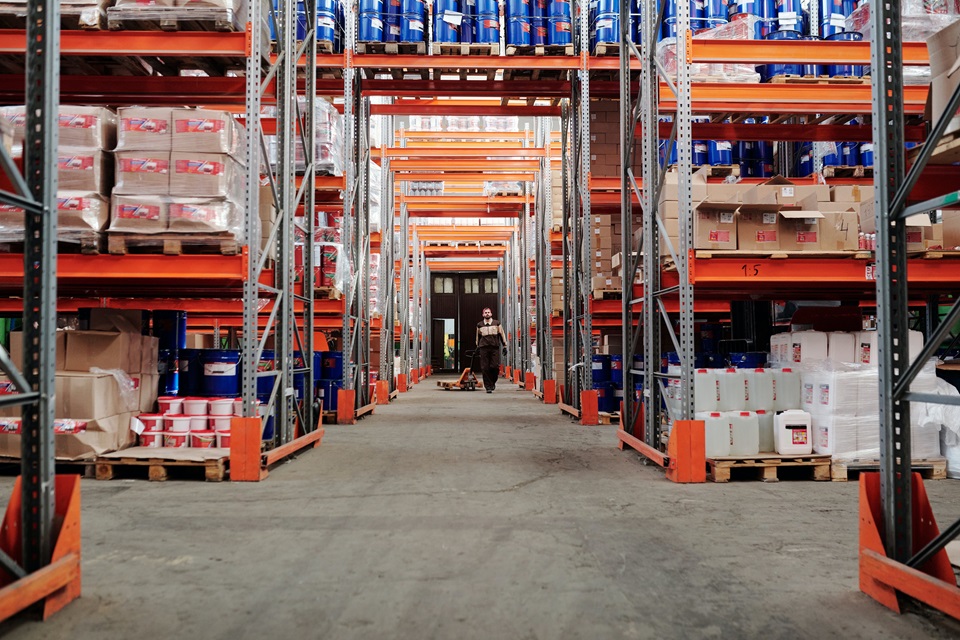Did you know that in every supply chain, there’s a busy warehouse where products are stored, orders are fulfilled, and inventory is carefully managed? That’s right, warehousing distribution is a crucial aspect of the logistics industry that ensures timely and efficient delivery of goods to customers.
But what exactly does warehouse distribution mean? In this post, we’ll discuss the basics of warehousing distribution and explore its significance in the supply chain.
Table of Contents
What Is Warehousing Distribution?
Warehousing distribution refers to the process of receiving, storing, and distributing goods within a warehouse facility. If you have ever ordered a product online, chances are that it has gone through a warehouse distribution process before reaching your doorstep.
The products are first received at the warehouse from the manufacturer or supplier, then stored until they are needed to fulfill customer orders. Once an order is placed, the product is retrieved from storage and prepared for shipment.
The Fundamental Functions Of Warehousing
Warehousing distribution is the backbone of efficient supply chains. Its fundamental functions include storage, order fulfillment, and inventory management. Let’s discuss each in this section.
Storage
Warehouses are storage hubs for different kinds of products. These facilities accommodate diverse inventory, including perishable goods to durable items. To optimize space and enhance accessibility, efficient storage solutions are employed, such as:
- Racking
- Automated storage and retrieval systems (AS/RS)
Order Fulfillment
Order fulfillment is one of the primary functions of warehousing distribution. As orders come in from various sources, warehouses are responsible for:
- Picking
- Packing
- Shipping products to meet customer demands
Streamlining these processes ensures quick and accurate deliveries.
Inventory Management
Effective inventory management leads to successful warehousing distribution. It involves:
- Tracking stock levels
- Monitoring product turnover rates
- Implementing strategies to prevent overstock or stockouts
Modern technology, like inventory management software, enables real-time tracking and enhances decision-making.
The Significance Of Location
The strategic placement of warehouses influences successful warehousing distribution. Proximity to markets and connectivity to transportation networks are two important considerations in choosing your warehouse location. Let’s find out why.
Proximity To Markets
The strategic location of warehouses significantly impacts the overall efficiency of distribution. Placing warehouses near markets reduces transportation costs and minimizes delivery times. This is important for industries where timely delivery is expected.
Transportation Connectivity
Warehouses must be well-connected to transportation networks, including:
- Highways
- Railways
- Ports
This connectivity ensures quick movement of goods and cost-effective transportation. The choice of location can significantly influence the overall logistics strategy of a business.
Technology Transforming Warehousing Distribution
Warehousing distribution undergoes a transformative shift as it embraces automation and data analytics as key elements that enhance efficiency and reshape traditional logistics practices.
Automation
Advancements in technology have revolutionized warehousing distribution. Automated systems, including robotics and conveyor belts, streamline the movement of goods within warehouses. This improves efficiency and reduces the margin of error in tasks like order picking and packing.
Data Analytics
Data analytics tools provide valuable insights into warehouse operations. Businesses can make informed decisions to optimize their distribution processes by analyzing data on:
- Inventory levels
- Order patterns
- Warehouse performance
This leads to better resource allocation and improves overall efficiency.
Challenges In Warehousing Distribution
Warehousing distribution also faces challenges like space constraints and labor shortages. These require strategic solutions to ensure smooth and effective operations.
Space Constraints
With the increasing demand for storage space, warehouses often face capacity-related challenges. Implementing efficient space utilization strategies and exploring expansion opportunities are essential to address this issue.
Labor Shortages
The logistics industry, including warehousing, often grapples with labor shortages. Some strategies to attract and retain skilled workers include:
- Investing in employee training programs
- Adopting automation to complement human efforts
- Providing competitive wages
Sustainable Warehousing Distribution Practices
Embracing the global call for environmental responsibility, sustainable warehousing distribution practices are emerging as crucial elements in the logistics landscape. Here are some sustainable warehousing distribution practices:
Green Logistics
As sustainability becomes a global priority, warehousing distribution adapts to eco-friendly practices. Implementing green logistics involves reducing carbon emissions through:
- optimized transportation routes
- energy-efficient warehouse designs
- using environmentally friendly packaging materials
Recycling & Waste Reduction
Warehouses are increasingly adopting recycling programs and waste reduction initiatives. This includes:
- proper disposal of packaging materials
- reusing pallets
- implementing waste management systems
These efforts help minimize the environmental impact of distribution operations. Explore innovative solutions with HopLog warehousing distribution to enhance your supply chain sustainability.
Final Thoughts
Warehousing distribution is a multifaceted process that involves storage, order fulfillment, and inventory management. The strategic location of warehouses, technological advancements, and sustainable practices are shaping the future of this critical aspect of the supply chain.
By understanding and addressing challenges while embracing innovative solutions, businesses can enhance the efficiency and sustainability of their warehousing distribution operations.



